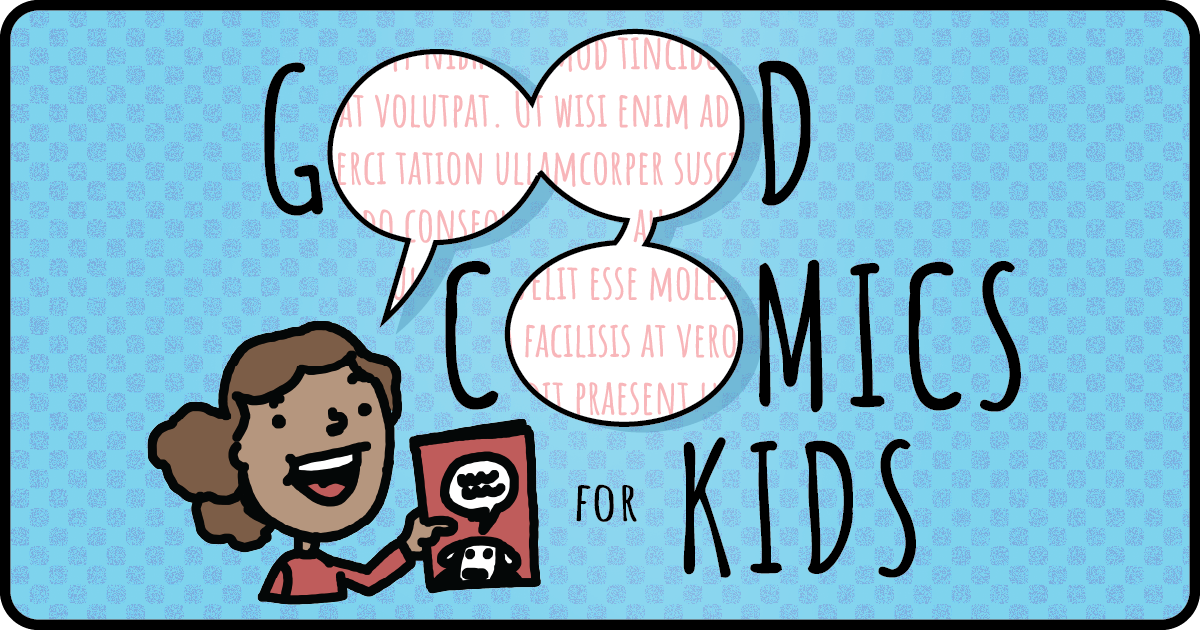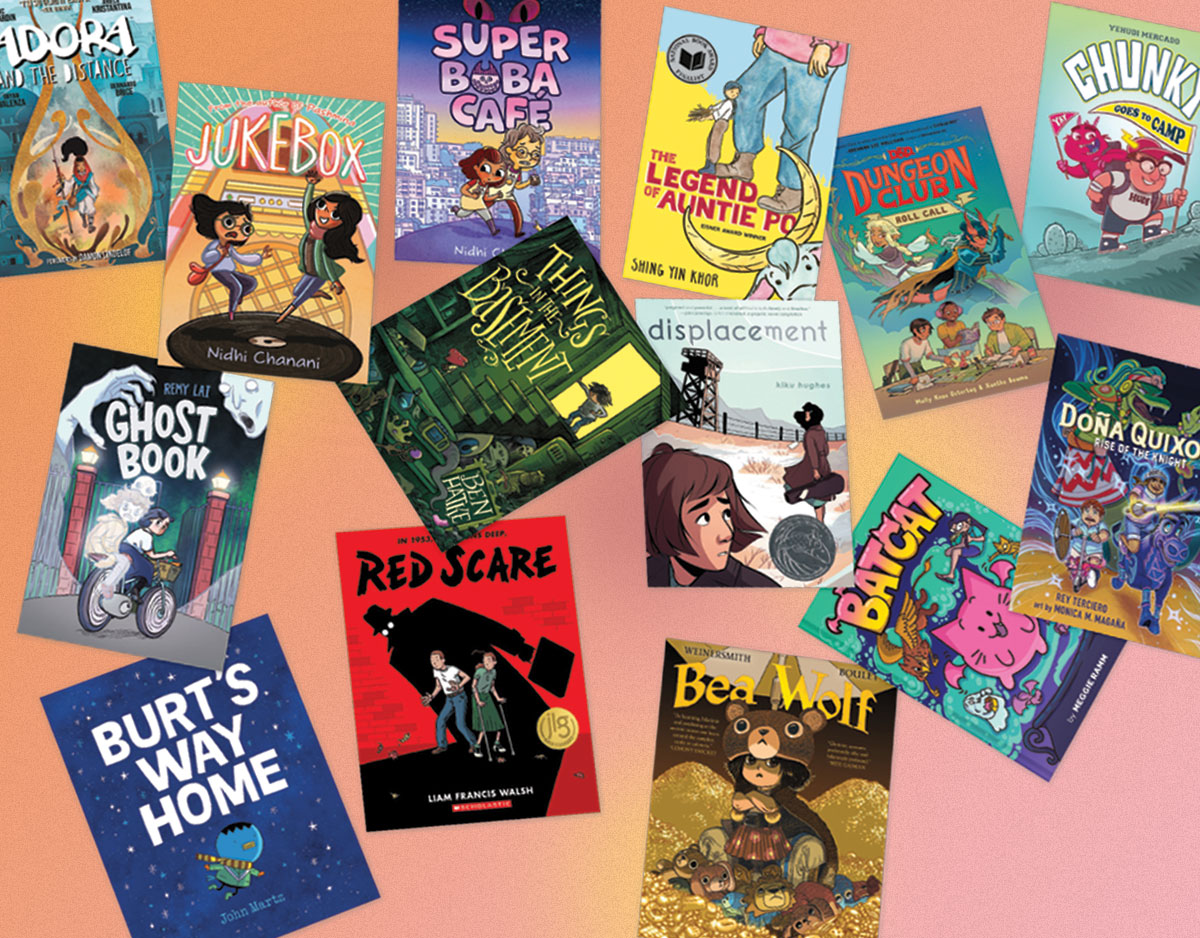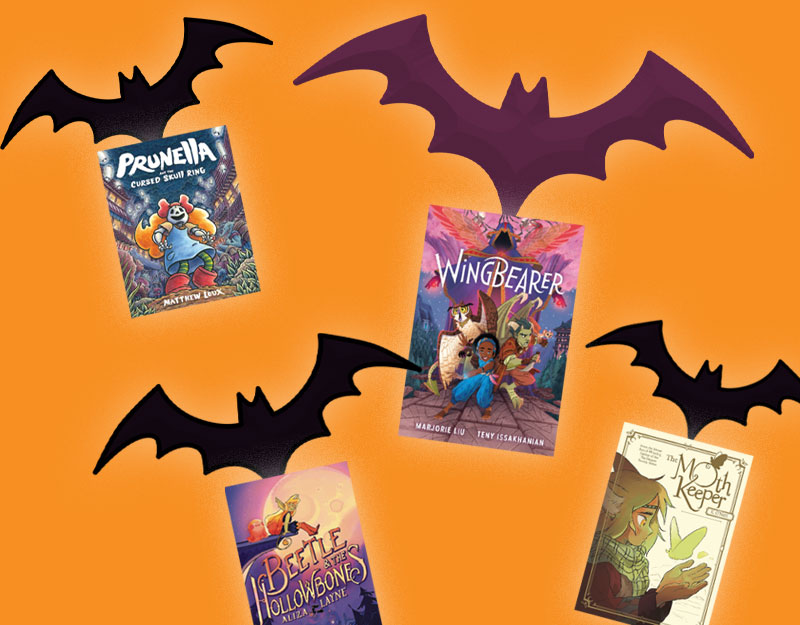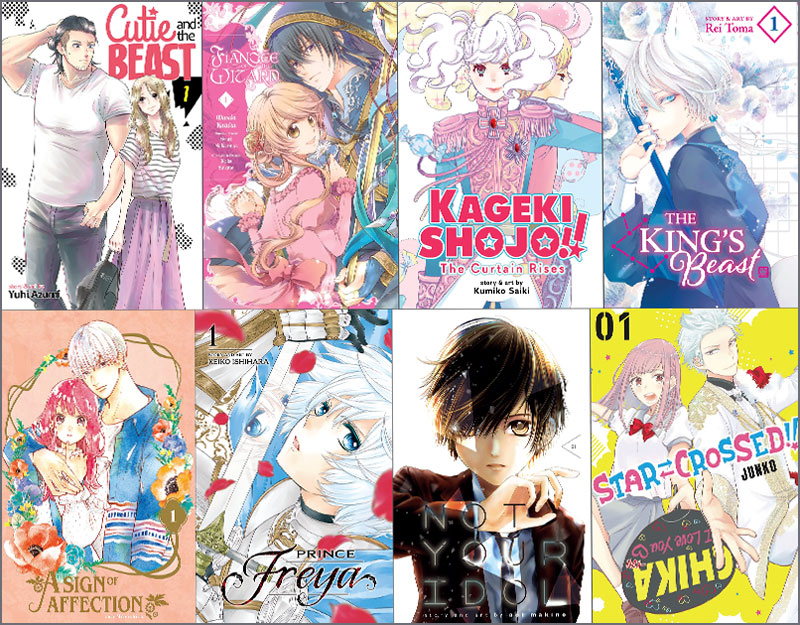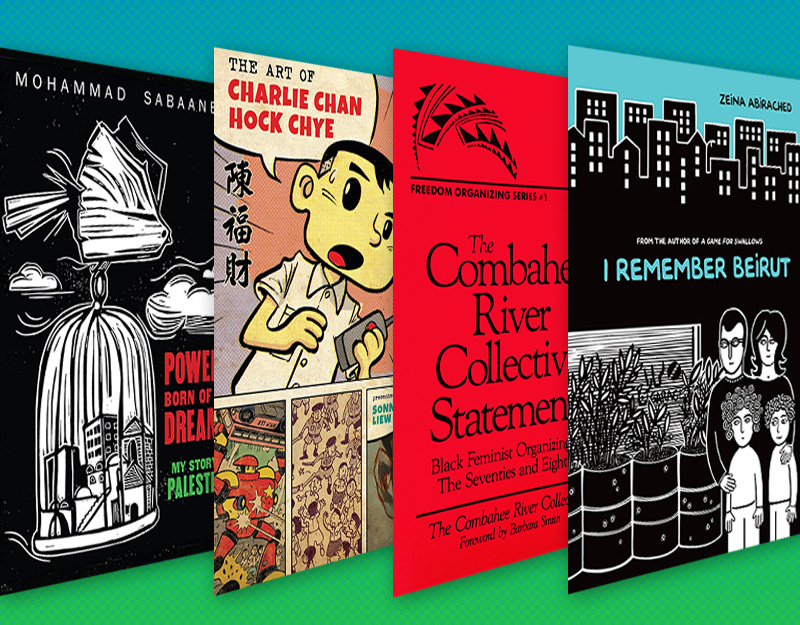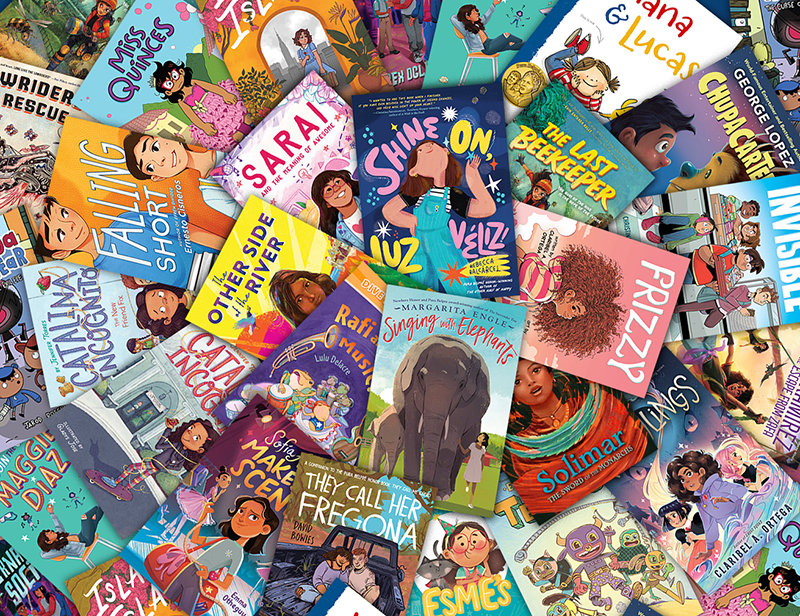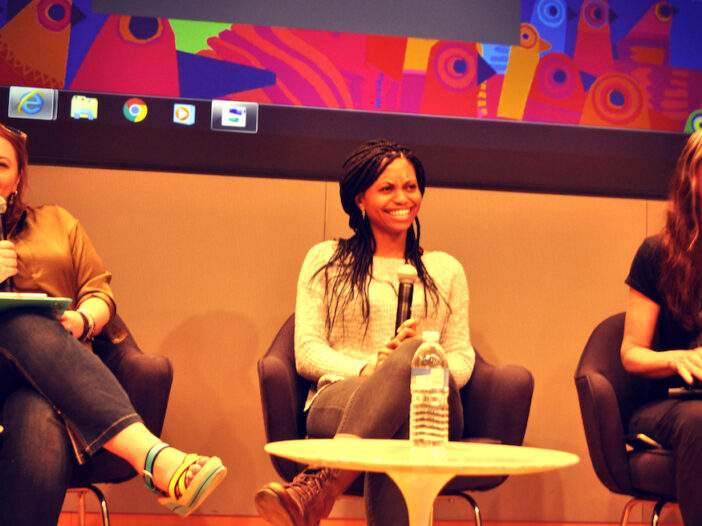
Guest Post: Thoughts on NYPL/NYCC and the Sanctuary of Stories
Today I am happy to welcome Peter Gutierrez back to the site. Peter is a writer and media consultant who has a lot to say about comics and literacy, and he is reporting today on the New York Comic Con sessions at the New York Public Library.
With a couple of weeks to reflect, I’m struck anew by all the ambient inspiration at New York Comic Con’s Professional Day—and by how far things have come in a decade. Does anyone else remember the first few years of the con, specifically the early versions of “Thursday,” the day dedicated in part to librarians and educators? The programming was always fairly solid, but it didn’t diminish the ghost-townish feel of that Javits Center lower level.
ADVERTISEMENT
ADVERTISEMENT
This year, by contrast, the location was the New York Public Library’s famed Schwarzman Building, and featured a loooong, glorious line of attendees snaking up Fifth Avenue well before the doors opened. (I’ve been told that the NYPL was hoping for 200-250 attendees—and stopped counting after 1200.) To term the setting “beautiful” would be inaccurate: events actually comprised several beautiful settings, including repurposed reading rooms full of amber light and gold tapestries. Certainly this change in location was impressive, but I’d contend it mirrored a cultural shift that may be harder to notice, especially if you’ve been busy living it.
To put it simply, no longer must librarians always feel like an even smaller enclave of outsiders within the ranks of comics geekdom… and, similarly, the Library Establishment’s (literal) marble halls are now fully welcoming to those who champion graphic novels.
With expanded programming thanks to NYPL’s participation, the tone ranged from the fannish to the highly academic, mostly cleaving to a happy medium. There were the bread-and-butter, practical-minded panels that such a gathering almost requires such as those on graphic novel adaptations of literature and how librarians can partner effectively with creators. However, the expansion also allowed for more specialized offerings such as panels on Joseph Campbell and the “queering of sex education.” The overall feel, then, was of a sober professional development conference thoroughly suffused with the fellowship and fun of a pop culture meet-up.
There was also the sense that comics no longer had to apologize for being comics. For example, in the lesson planning panel, moderated by UDON Entertainment’s John Shableski, there was very little “rationale-providing.” In fact, there was very little lesson planning per se—attendees (and it was a SRO crowd) and panelists engaged instead on deeper issues of pedagogy, administrative buy-in, and curriculum integration (e.g., veteran high school teacher John Weaver explained how Watchmen pairs naturally with Hamlet).
Similarly, another Shableski-moderated panel strayed fruitfully from its job description. “While the focus of the session was on inspiring activism through the use of graphic novels,” Shableski recalls, “the conversation led to a fantastic point that Marjorie [Liu, co-creator of Monstress] made about cultural representation in comics publishing. When she told the story of when a group of Asian-American girls tearfully explained how incredible it felt to see themselves represented in a graphic novel, you could see just how deeply this also resonated with the people in our audience. It was a truly powerful moment.”

ADVERTISEMENT
ADVERTISEMENT
In that sense, the session came to echo an overarching theme of the day, one that was expertly highlighted by the keynote session, “Talking About Tough Topics in YA Comics.” Featuring Ngozi Ukazu, whose hugely popular webcomic Check, Please! explores “Otherness” and commonality, and Laurie Halse Anderson, author of Speak, which is being adapted into a graphic novel, the keynote movingly showed how comics and graphic novels have moved far beyond novelties or mere engagement-vehicles. Rather, they are now held by teachers and librarians as important mirrors and bridge-builders for young people—like any other form of authentic literature.
Thus they follow in the footsteps of YA Lit a generation earlier. As Halse Anderson, whose own novels deal with topics such as eating disorders and sexual assault, put it, “Through all those years, after I learned how to read, stories had been such a place of solace for me, a sanctuary, and really kept me going through some dark times… I saw suffering all around me—and I’m still that 15-year-old.”

A closely related theme, both in the keynote and the day more generally, concerned how graphic literature “makes new worlds accessible.” Moderator Heidi MacDonald touched upon this theme, for example, when she noted how Ukazu “took ‘bro culture’ and made it so lovable.” The flipside to this, of course, is how such stories can simultaneously validate the idiosyncratic and the personal. In short, the comics medium is clearly helping young people learn more about both the Other and themselves, and often closing the gap between the two. This notion was implicit throughout the panel on “Girl Power Comics,” which not only made a point of not excluding boys in the conversation, but also took pains to make sure that the very term “girls’ comics” was not overly reductive. This means eschewing shortcuts and idealized characters in favor of real individuals. As creator and editor Mark Siegel pointed out, crafting compelling female protagonists is part of the same mysterious and challenging creative process as everything else. Likewise, as fellow panelist Jenni Holm stated, there’s no secret trick to writing for girls for the simple reason that “there’s no such thing as a generic girl.”

This navigating of the intensely personal and the profoundly universal is something that comics have been doing forever, and of course countless librarians and educators have long known this. The great thing about the current state of the culture as evidenced by NYPL/NYCC 2017 is the extent to which the conversation can and does remain on this same readership-centric level. After all, helping kids and teens discover texts that speak directly to them and which then ignite, by some strange alchemy of adolescence, their own voice is what ELA teachers and youth librarians are all about. It validates that voice before it even speaks, and in doing so, empowers it to speak in the first place.
Filed under: News
About Brigid Alverson
Brigid Alverson, the editor of the Good Comics for Kids blog, has been reading comics since she was 4. She has an MFA in printmaking and has worked as a book editor, a newspaper reporter, and assistant to the mayor of a small city. In addition to editing GC4K, she is a regular columnist for SLJ, a contributing editor at ICv2, an editor at Smash Pages, and a writer for Publishers Weekly. Brigid is married to a physicist and has two daughters. She was a judge for the 2012 Eisner Awards.
ADVERTISEMENT
ADVERTISEMENT
SLJ Blog Network
The Moral Dilemma of THE MONSTER AT THE END OF THIS BOOK
Cover Reveal and Q&A: The One and Only Googoosh with Azadeh Westergaard
Parsing Religion in Public Schools
ADVERTISEMENT

